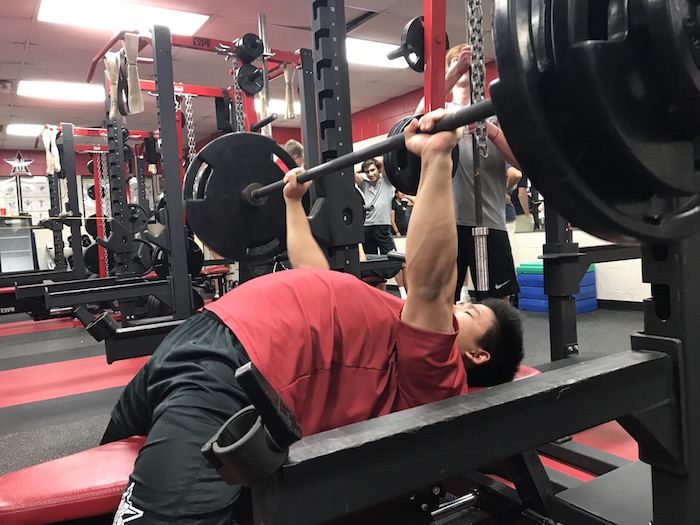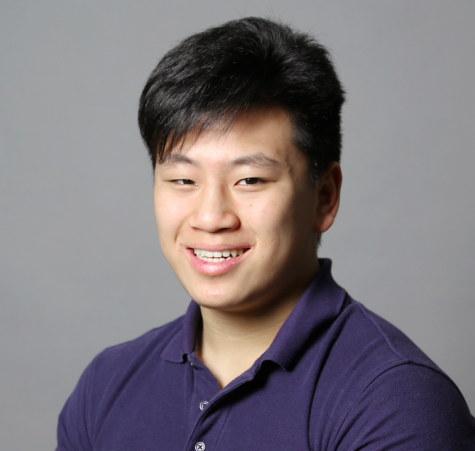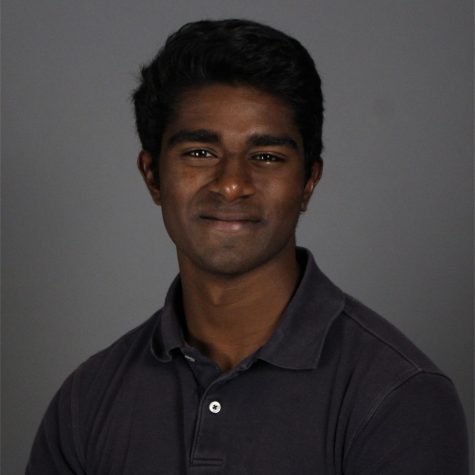Weight training offers emotional, physical gains
Senior Ben Kang dedicates time every day to lift as much weight as possible.
May 15, 2017
Every week, senior Ben Kang chooses one day to hit the weight room and lift as much weight as he can in one repetition of the bench press, back squat or deadlift. Kang uses these max-out sessions to reach personal records (PR’s) on the three main exercises of powerlifting.
A co-founder of the Weightlifting Club, Kang follows a Russian powerlifting program, the Sheiko system. He has lifted weights consistently since sophomore year, when he decided to get serious about weight training after experimenting with different fitness programs.
“Fitness for me began as a tool for self-improvement. After a while, it became something to look forward to, something to get me through the day,” Kang said. “It’s been a sort of motivation, because it’s one of those things in which effort really does yield results.”
Kang uses his performance on PR days to assess his improvements in strength and fitness.
“Weightlifting, for me, is about setting goals for myself and exceeding them,” Kang said. “I’m not motivated by the competition. It’s about challenging yourself to do something you couldn’t do a month ago.”
While Kang has gotten bigger and stronger through lifting, he also developed motivational skills.
“Weight lifting tests your commitment, your patience, your dedication and your ability to find out why things aren’t going the way they should,” Kang said. “I’ve learned to set small, achievable goals regularly and a long-term ‘reach’ goal to build up to.”

For Kang, weightlifting has led to both physical and personal growth.
Kang considers powerlifting to be his foremost athletic commitment, but most students use weightlifting primarily to improve in other sports.
A number of athletes, in particular sophomore football players, consistently attend early-morning Gorilla workouts with strength and conditioning coach Virgil Campbell.
“We definitely push each other to work out for the success of the team,” sophomore football player Emerson Knapp said.
For students who can not attend the Gorilla workouts, the new schedule’s longer carriers allow them to fit workouts into their free periods.
“The new schedule especially promotes fitness because it provides more time to work out, especially during free periods and after school,” senior Eric Yang said. “Last year I could not make it over to the gym within one 45-minute free period but now with one hour I have time to get in a full workout.”
Maverick sports teams focus on weight training and conditioning to improve the performance of athletes.
“My coaches always promote working out for basketball, and they encourage me to lift so I can be stronger and perform better in games,” sophomore Saeed Chabatya said.
Training regimens are developed to fit the needs of different athletes and account for different sports.
“I will build workouts based on the movement and muscles the athletes actually use in their sport,” Campbell said. “The exercises that strengthen the most important areas for each sport provide the backbone for every workout I put each team’s athletes through.”
While many students train for a school sport, junior Henry Philpott focuses his workouts on preparing for triathlons. Philpott, a former nationally-ranked gymnast, picked up triathlons after injuries forced him to stop competing in gymnastics.
“I absolutely loved it after my first run, so I decided to make triathlons my new gymnastics,” Philpott said. “Training for triathlons is a huge part of my life. I absolutely love pushing my body to the absolute limit while being outdoors and working hard.”
Philpott also participates in cross country and diving for the Mavericks and schedules triathlon training around his school practices. According to Philpott, students value athletics and fitness in addition to academics.
“The fitness culture at SJS is pretty awesome,” Philpott said. “You can see that through the 70 guys doing cross country. Most people participate in sports and that really says a lot.”






